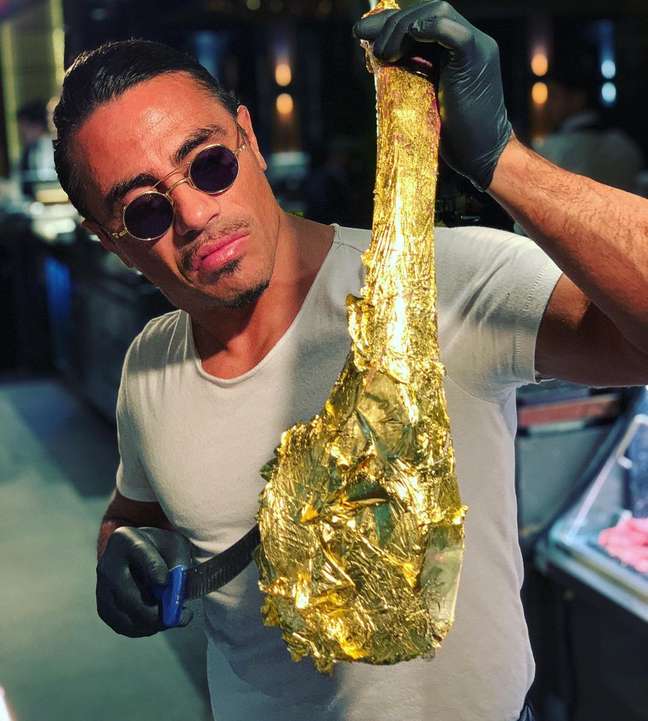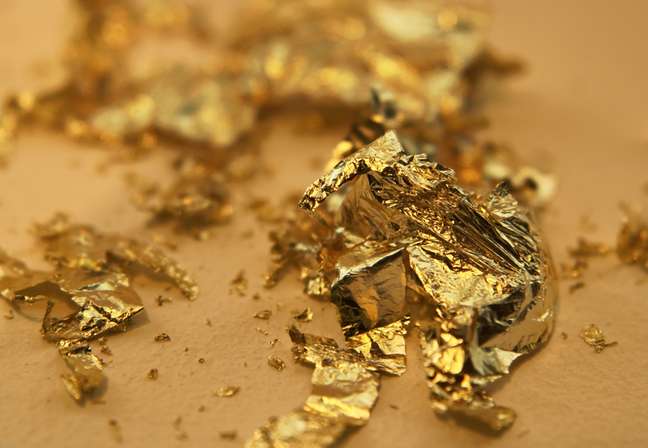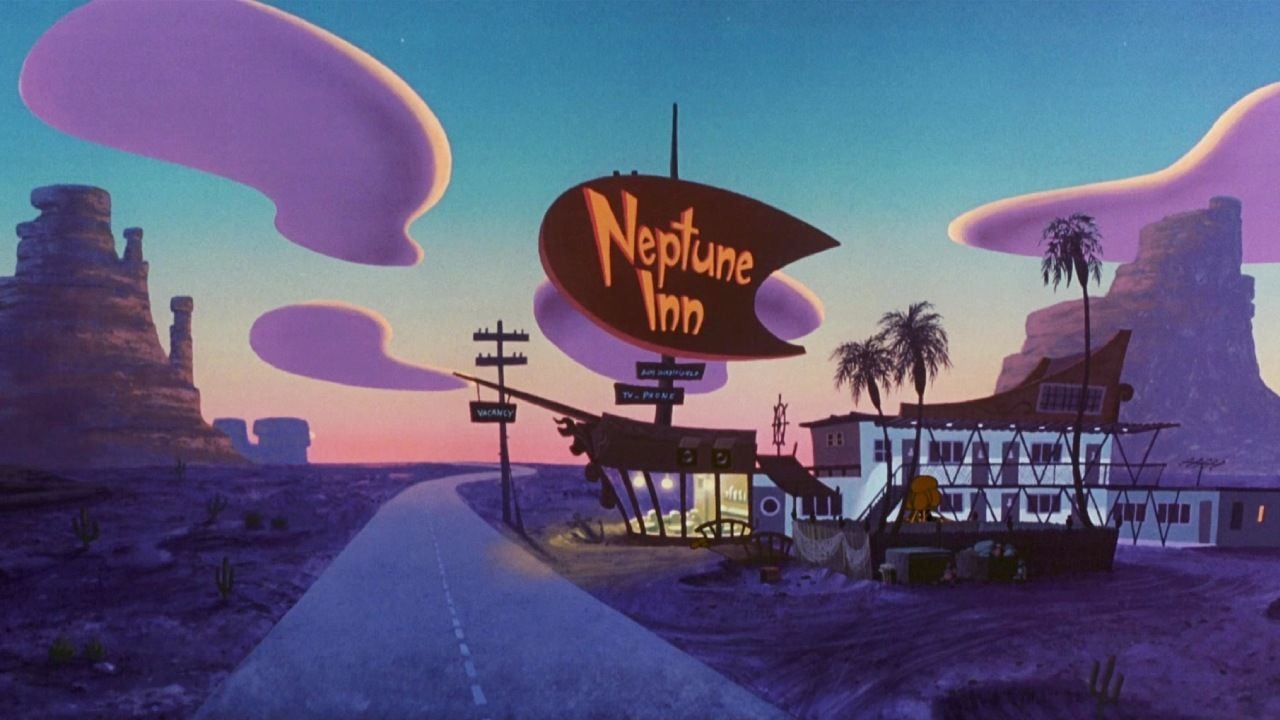After the Gold Cup steak controversy, find out what these edible gold flakes are and if there’s any danger in ingesting them
During the World Cup in Qatar, Ronaldo Fenômeno and the Brazilian national team caused a stir when they went to the Nusr-Et steakhouse and tasted a steak covered in gold leaf for R $9,000. Despite the controversy, it is no news that edible gold is being used in gastronomy to add a touch of luxury and glamor to dishes.

These gold leaves are tiny pieces of pure gold, 23 or 24 carat, generally used to decorate savory dishes, sweets and even drinks.
The lavish adornment can be found in Brazil at prices starting at R$10 per unit, if legit. There are also imitation gold leaf which are sold at cheaper prices. It can already be found on American sites in other formats, such as sprays or flakes.
Is edible gold real gold?
Unlike the gold used to make jewelry, which is usually mixed with other elements such as silver and aluminum, edible gold must be in its purest state to be consumed. So, if you taste foods decorated with gold, know that you are consuming particles made of 100% real gold.

Regardless of the format (powder, leaf, flake, etc.), the element has no flavor and also does not change the texture of the ingredients. It is used only to decorate dishes.
Is it safe to eat gold?
In 2016, the European Food Safety Authority (EFSA) evaluated the compound and authorized its use in confectionery, to decorate cakes and chocolates. After a while, its use was also approved to decorate pasta, meat, wine, cocktails, risottos and soups. So don’t worry, use tested and licensed. However always in its pure state, never mixed with other metals.

Gold is not absorbed by our body, so its intake does not bring nutritional benefits or damages. In the same way it enters our intestines, it comes out.
Despite this, there is also research showing a different view of edible gold. A Japanese scientist named Koichi Imai, a postdoctoral fellow in the Department of Biomaterials at Osaka University of Dentistry, said tiny gold staples can linger in the digestive tract for a long time, causing the risk of developing cancers. He thinks it’s necessary to develop an edible gold leaf that dissolves completely in the human digestive tract so we can safely consume it.
Origin of the use of gold in gastronomy
Eating gold may seem strange, but the practice began with the Egyptians some 5,000 years ago. The pharaohs believed that by consuming this luxurious ingredient they could please the gods. They have also associated its use with rejuvenation and vitality.
It was also (and still is) a symbol of ostentation and wealth, which is why European monarchs consumed gold at their banquets during the Middle Ages.

Currently, gold leaves are used in sandwiches, coffee, meat, ice cream, drinks, sushi, among other foods. But, usually, you have to shell out a large sum to try this delicacy in restaurants and pastry shops.
+The best content in your email for free. Choose your favorite Terra newsletter. Click here!
Source: Terra
Ben Stock is a lifestyle journalist and author at Gossipify. He writes about topics such as health, wellness, travel, food and home decor. He provides practical advice and inspiration to improve well-being, keeps readers up to date with latest lifestyle news and trends, known for his engaging writing style, in-depth analysis and unique perspectives.






